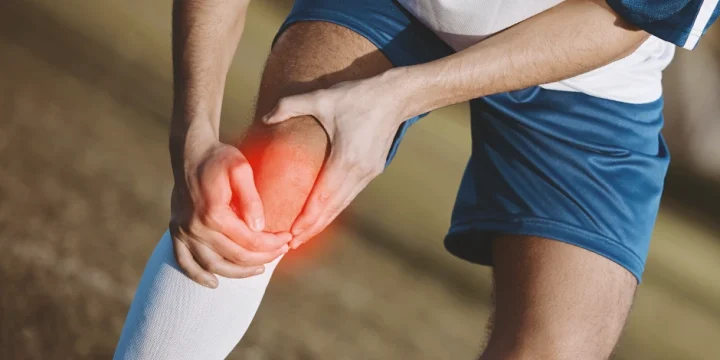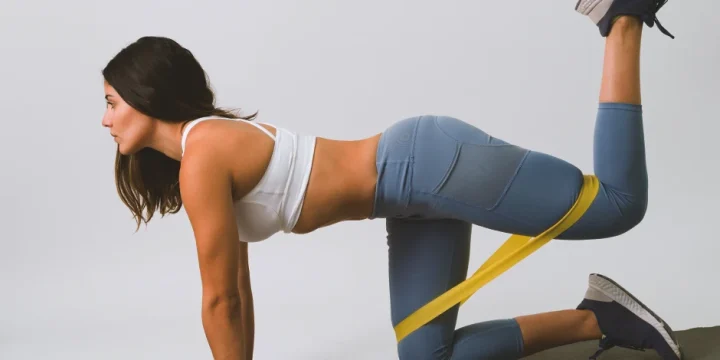Chronic or acute low back pain can significantly disrupt everyday life, but thankfully, some specific exercises and stretches can offer great relief.
In my years as a fitness trainer, I have had countless clients who suffered from back pain. During that time, I have extensively tested and found what works and what doesn’t.
In this article, I compiled a list of movements like strengthening exercises and restorative yoga postures that will help you get back to a life free of chronic low back pain.
Quick Summary
- Some of the best exercises for the lower back are ones for the core that help strengthen abdominal and hip flexor muscles, alleviating and preventing lower back pain.
- Low back pain can be chronic or acute and significantly impacts daily activities and the ability to perform regular exercise.
- A study by the National Institutes of Health reveals that therapeutic aquatic exercise programs significantly improve pain levels and quality of life in individuals with chronic back pain.
- In my personal opinion, consistent yoga practice, especially poses like Balasana, offers remarkable relief and strength for back pain sufferers.
Best Movements for Back Pain
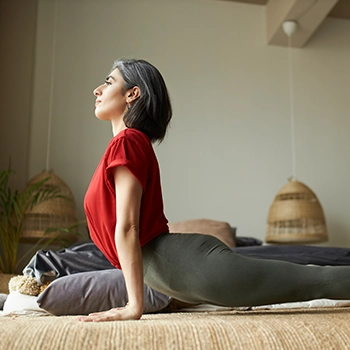
Some of the best movements for back pain include stretching, working out in the water, yoga, and exercises that focus on strengthening core muscles.
Whether your back pain is acute due to injury or chronic, remember to check with your physical therapist or doctor before beginning any new fitness routine.
Start slowly with brief sessions that increase in intensity and duration over time as you grow stronger.
Remember to keep good form for each exercise and stretch to prevent further aggravating your back pain.
I’ve broken down the movements into four categories, core exercises, stretching, water workouts, and yoga. Let’s take a look at each one.
1. Core Exercises
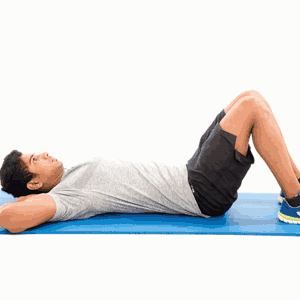
Based on a study published by the National Institutes of Health (NIH), incorporating core stability training into your routine can help restore proper kinetic function, reduce pain scores, functional disability and recurrences of acute back pain episodes [1].
Working these muscles can also improve balance and joint stability, both of which help reduce existing strain on the back.
Here are a few examples of core strengthening exercises.
Partial Crunches
Drawing from my experience, partial crunches, when performed correctly, can significantly strengthen your back and stomach muscles.
Do these by lying flat on the floor with your knees bent and feet flat.
- Cross your arms over your chest.
- Tighten your stomach muscles and slowly lift your shoulders off the floor, exhaling as you do so.
- Your feet, tailbone, and lower back should remain on the floor.
- This proper form will ensure that you don’t stress your lower back excessively.
Plank
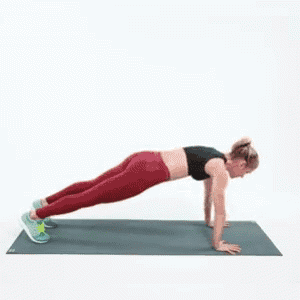
The plank is a classic core exercise that engages the abdominal, shoulder, leg, and lower back muscles.
- Start in the push-up position on your hands and toes with your hands slightly wider than shoulder-width apart.
- Brace your abdominal muscles to keep your spine in a neutral position as you hold this position as long as you can, but 2 minutes seems to be the optimal upper limit for most people.
Pelvic Tilt
Lie on your back and bend your knees so both feet feel firmly planted.
- Focus on contracting your stomach muscles like you are bracing for impact.
 Push yourself into the ground while gently rocking back from hips to pelvis.
Push yourself into the ground while gently rocking back from hips to pelvis.- Take deep breaths during each 10-second hold.
- Repeat 8-12 times.
2. Stretching
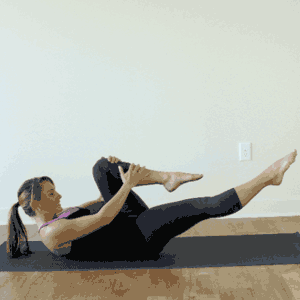
Per a 2016 study published on the National Library of Medicine, stretching exercises help improve back pain as they increase flexibility and reduce tension in the muscles [2].
Here are a couple of the best stretches for back pain: the knee-to-chest stretch and the hamstring stretch.
Knee-to-chest
Lie on your back to begin this stretch.
- With your knees bent and your feet flat on the floor. Bring your left or right knee to your chest while keeping the other foot flat on the floor.
- Make sure your back remains pressed to the floor, holding the position for 15–30 seconds.
- Repeat with the other knee.
 Hamstring Stretch
Hamstring Stretch
The hamstring stretch begins in the same starting position: lie on your back.
- Choose your right or left leg to start, and place both hands behind the knee.
- Straighten the lower leg and hold the stretch for 20 seconds.
- Slowly lower your leg to the starting position.
- Repeat with the other leg.
3. Water Workouts

Water not only provides support for the body but offers resistance as well.
Any aquatic aerobic exercise is suitable if you are performing a water workout to alleviate back pain.
Working out in the water is easier on the joints versus land-based activities.
Additionally, a study published by the National Institutes of Health (NIH) shows that individuals with chronic back pain who participated in a therapeutic aquatic exercise program experienced improved pain levels, quality of life, sleep, and mental state [3].
Water has the quality of eliminating weight-bearing with buoyancy and allows for natural traction of the vertebral segments as the spine elongates in the deeper water; this results in relaxation of the tissues, helping eliminate muscle tightness and spasms, which is one of the main culprits in chronic low back pain.”
- Daniel F. O’Neill, M.D.
4. Yoga
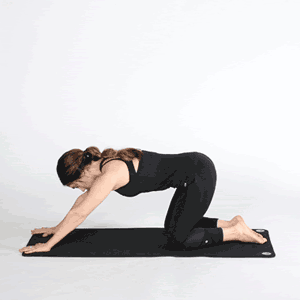
Yoga combines flexibility and strength in a way that few other exercises accomplish.
Based on my first-hand experience, I've seen how yoga, particularly through movements like the Child’s Pose (Balasana), can effectively alleviate back pain. It helps realign and strengthen back muscles.
Yoga’s focus on breathing can bring awareness to tense areas of the body, including back muscles, which can aid recovery from pain or injury.
As with any exercise, it is essential to practice proper form. Working with a qualified instructor can ensure you are reaping the most benefits and avoiding further injury.
Balasana
Here is how to do the Balasana, a resting posture that stretches various parts of the body and is suitable for beginners and those more experienced.
The starting position for this pose is to be on your hands and knees with your feet together.
- Sit back and open your knees hip-width apart while lowering the chest to the floor and extending the arms forward.
- Take a few deep breaths and completely relax into the posture, releasing extra tension in your shoulders and neck.
- Most people maintain this pose for 30 seconds to two minutes, depending on how they feel.
Related Articles:
Exercises to Avoid

While specific exercises relieve lower back pain, avoiding movements that aggravate the condition is essential.
Classic crunches and sit-ups can flex the spine and cause discomfort and additional pain. It is also best to avoid high-impact exercise like running, which is jarring to the body.
Attempting to touch your toes while keeping your legs straight is one of the worst movements to perform with low back pain.
It is also advisable to avoid heavy lifting, including weights, and any movements where you twist your upper body.
FAQs
What Exercises Should I Avoid With Lower Back Pain?
If you have lower back pain, avoid high-impact exercises like running, crunches, off-road biking, and heavy weights. Always listen to your body and consult a physical therapist or physician for acute or chronic back pain.
What Is the Single Best Exercise for Lower Back Pain?
The single best exercise for lower back pain might be a water workout because the water helps support the body while providing resistance. It is essential to avoid any water exercises that twist the body, which could cause further muscle strain.
References:
- https://pubmed.ncbi.nlm.nih.gov/19610550/
- www.ncbi.nlm.nih.gov/pmc/articles/PMC4934575/
- https://pubmed.ncbi.nlm.nih.gov/34994794/
About The Author
You May Also Like
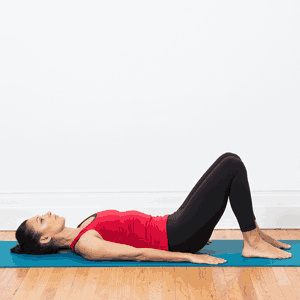 Push yourself into the ground while gently rocking back from hips to pelvis.
Push yourself into the ground while gently rocking back from hips to pelvis.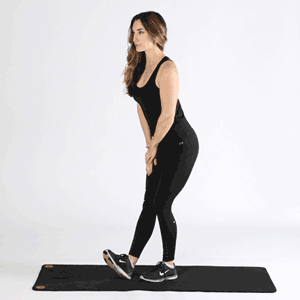 Hamstring Stretch
Hamstring Stretch